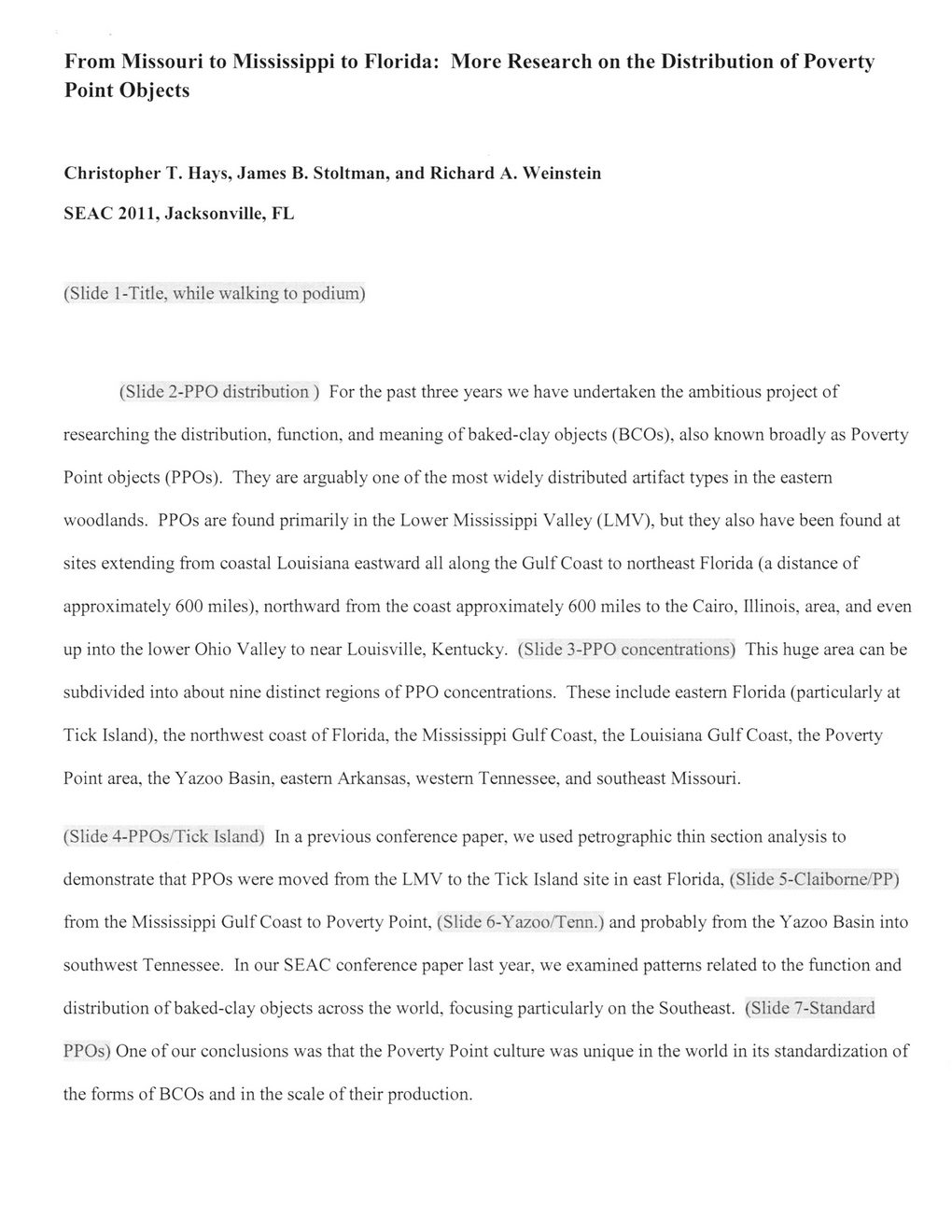This text was obtained via automated optical character recognition.
It has not been edited and may therefore contain several errors.
From Missouri to Mississippi to Florida: More Research on the Distribution of Poverty Point Objects Christopher T. Hays, James B. Stoltman, and Richard A. Weinstein SEAC 2011, Jacksonville, FL (Slide 1-Title, while walking to podium) (Slide 2-PPO distribution) For the past three years we have undertaken the ambitious project of researching the distribution, function, and meaning of baked-clay objects (BCOs), also known broadly as Poverty Point objects (PPOs). They are arguably one of the most widely distributed artifact types in the eastern woodlands. PPOs are found primarily in the Lower Mississippi Valley (LMV), but they also have been found at sites extending from coastal Louisiana eastward all along the Gulf Coast to northeast Florida (a distance of approximately 600 miles), northward from the coast approximately 600 miles to the Cairo, Illinois, area, and even up into the lower Ohio Valley to near Louisville, Kentucky. (Slide 3-PPO concentrations) This huge area can be subdivided into about nine distinct regions of PPO concentrations. These include eastern Florida (particularly at Tick Island), the northwest coast of Florida, the Mississippi Gulf Coast, the Louisiana Gulf Coast, the Poverty Point area, the Yazoo Basin, eastern Arkansas, western Tennessee, and southeast Missouri. (Slide 4-PPOs/Tick Island) In a previous conference paper, we used petrographic thin section analysis to demonstrate that PPOs were moved from the LMV to the Tick Island site in east Florida, (Slide 5-Claibome/PP) from the Mississippi Gulf Coast to Poverty Point, (Slide 6-Yazoo/Tenn.) and probably from the Yazoo Basin into southwest Tennessee. In our SEAC conference paper last year, we examined patterns related to the function and distribution of baked-clay objects across the world, focusing particularly on the Southeast. (Slide 7-Standard PPOs) One of our conclusions was that the Poverty Point culture was unique in the world in its standardization of the forms of BCOs and in the scale of their production.

Claiborne Historical Site Guerin-Giardino-(037)